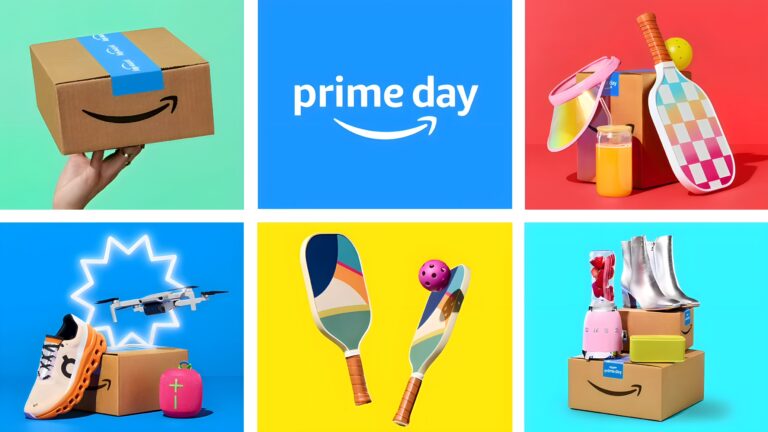Today, the way in which consumers buy has fundamentally changed. Recent growth in eCommerce transactions and the proliferation of online channels where consumers can find and purchase products present brands with new opportunities to connect with potential customers. However, increased competition and market fragmentation mean that having your brand discovered by a new customer can be harder than ever before.
In such an environment, Australian brands should not overlook the fact that online retail sales from marketplaces are booming. Recent reports highlight that sales from platforms such as Amazon, eBay and Tmall now account for approximately 62% of all global online retail sales. Therefore, it is somewhat surprising to learn that some Australian retail brands do not currently have a marketplace strategy in place and are not actively selling their own products through this increasingly powerful channel.
Why Aren’t More Australian Brands Active on Marketplaces?

A major barrier for brands adopting an online marketplace strategy today relates to perception. Marketplaces like Amazon or eBay are sometimes mistakenly perceived as being less of a priority to Australian brands, as these platforms have been historically associated with price-sensitive shoppers who may be less tied to brand loyalty. However, this perception is outdated and disconnected from reality with recent research showing that in North America alone, people were already spending more money on Amazon (with sales over $610 billion in 2021) than they were with longstanding retail goliath Walmart.
Understanding the local marketplace opportunity
As the leading marketplace platform available to Australian brands, Amazon continues to rapidly grow its share of the online retail market. Amazon’s local revenue was reported to have hit AU$1.75 billion in 2021, and indicators from Pattern’s Australian Shopper Report 2022 suggest it will smash through the $2 billion barrier this year.
Importantly, for Australian brands weighing up their own marketplace strategy and assessing channels for growth potential, research indicates that the majority of those who bought something from Amazon.com.au in the past 12 months expect to spend the same or more on the platform in 2022. In fact, 44% predict they will spend more on Amazon this year, and a further 44% predict they will spend the same. Even more so, with Amazon’s annual shopping event, Amazon Prime Day, just announced for 2022, there has never been a better time than now for retailers to delve into the marketplace space and list their products on platforms such as Amazon. Set to take place over 2 days on July 12th and 13th, Amazon Prime Day is growing in popularity every year, selling over 100 million products in 2021.
As Australians become more accustomed to purchasing from marketplaces, and the size of their spend through these channels increases, more retail brands will become present on Amazon, eBay, and other platforms. Selling in more places and putting a brand’s products on more marketplaces can not only broaden a retailer’s reach and drive revenue but also act as a defence strategy against unauthorised sellers.
So, How Are Marketplaces Positioned?

1. Brand Discovery Channel
It’s no secret that marketplaces attract significant traffic and have high visitor engagement, thanks to their fast delivery propositions, a broad choice of products available, and competitive prices. Likewise, marketplaces have become an increasingly important route to market brands who wish to acquire new customer groups.
Moreover, marketplaces have become a product discovery hub for many online shoppers – as well as a place for loyal customers to repurchase their favourite items – creating a platform for brands to build awareness. Amazon’s push into a broader range of product categories and its focus on a wide selection within those categories has led to the marketplace becoming a key facilitator of product discovery. To the extent that in other international markets, the platform’s customers commonly use the site as an online shopping search engine.
Research only reinforces the brand discovery opportunity for brands on marketplaces, with 68% of shoppers saying that they now buy products for the first time on Amazon. Additionally, a further 64% of shoppers say that they commonly buy products from brands they have never heard of or bought from before. As a platform, marketplaces often reduce the risk of shoppers ‘trying before buying’ when discovering new brands, by building purchaser trust through customer data, including real-world product reviews, and informative answers to product page questions.
2. For Brand Consideration
When executing an effective marketplace strategy, there are some key aspects retailers need to consider to accelerate brand discovery and leverage the opportunities the marketplace can provide.
Firstly, it’s important to ensure your product listing is as complete as possible and describes the product accurately and descriptively. By providing sufficient product information on each listing, customers have a better idea about every aspect of the product, which in return can help brands avoid ‘misleading’ product information. Imagery is also extremely important when listing products on the marketplace. When profiling a product on the marketplace, brands should include at least 6-8 images from several different angles. Pairing the product to related lifestyles through images is another good way to attract interest and give customers a clear understanding of how the product is used.
The next key step is to create a brand storefront, albeit, in digital form, that tells a clear story of the brand, showcasing who they are, what they sell, and what they represent as a company. Lastly, marketing and advertising strategies need to be implemented to ensure your brand is reaching as many people as possible, and in as many demographics and categories as possible. For this, impactful and engaging advertising campaigns, designed to raise brand awareness and widen customer reach, should be executed to expedite brand exposure on the marketplace.
3. To Build your Future Customer Base

Brand discovery will increasingly begin on marketplaces in the future. Rather than platforms like Amazon or eBay being impeding customer loyalty, brands have the opportunity to introduce themselves in these online environments, creating genuine connections with a new range of customers – who (after purchase) can go on to become ongoing and loyal repeat customers across a range of different sales channels, such as marketplaces, brand websites, and physical stores. It really is as simple as brands needing to be where their customers are – which is evidently now on the online marketplace, as those who don’t exist on these platforms merely lose the very customers they are trying to attract.
As marketplaces become more prevalent across the eCommerce space, it’s important to understand the impact that brand discovery can have on your overall holistic marketing strategy. To learn more about how your brand could start on marketplaces, contact us to speak with our marketplace team now.



